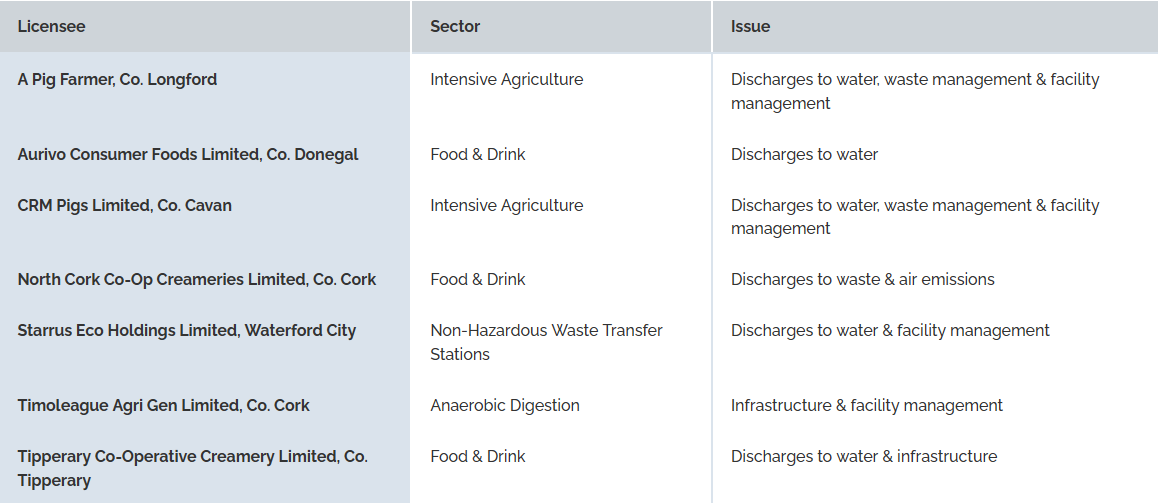Milk processors feature on EPA enforcement list

Three sites were food-and-drink-sector related, two were intensive agriculture sites, one was a waste-sector site and one was from the anaerobic digestion sector. The NPS is a system of performance-based indicators to rank industrial and waste licensed sites in order of priority for enforcement. This allows the EPA to target its enforcement effort at the licensed operators with the poorest environmental performance.
Commenting on the publication, Dr Tom Ryan, director, EPA’s Office of Environmental Enforcement said: "Our enforcement activities are risk based and we prioritise sites that are not complying with their licence. As noted in the EPA’s recent State of the Environment Report, a disproportionate number of sites on the National Priority Sites list have been from the dairy-processing and waste sectors. This trend continued in quarter three in 2024. The seven sites on the current list will be the subject of targeted enforcement action to ensure that the environmental issues are addressed, and compliance is restored.”
Pamela McDonnell, programme manager of the EPA’s Industrial Licence Enforcement Programme confirmed that three of the sites are milk-processing facilities: North Cork Co-Op Creameries Limited; Tipperary Co-operative Creamery Limited; and Aurivo Consumer Foods Limited. She said: “Each of these has featured on the NPS list previously. Milk and milk effluent pose a significant risk to local streams and rivers if not carefully managed. The dairy sector must prioritise investment in environmental controls to prevent the discharge of polluting material. This remains a priority issue for the EPA.”
The waste sites on the list include a non-hazardous waste transfer station and an anaerobic digestion facility. Both sites failed to provide sufficient infrastructure to protect groundwater and surface water.
Similarly, at the two intensive agriculture sites on the list, poor management of waste and storm water increased the risk of contaminated discharges.
The NPS list is below:





